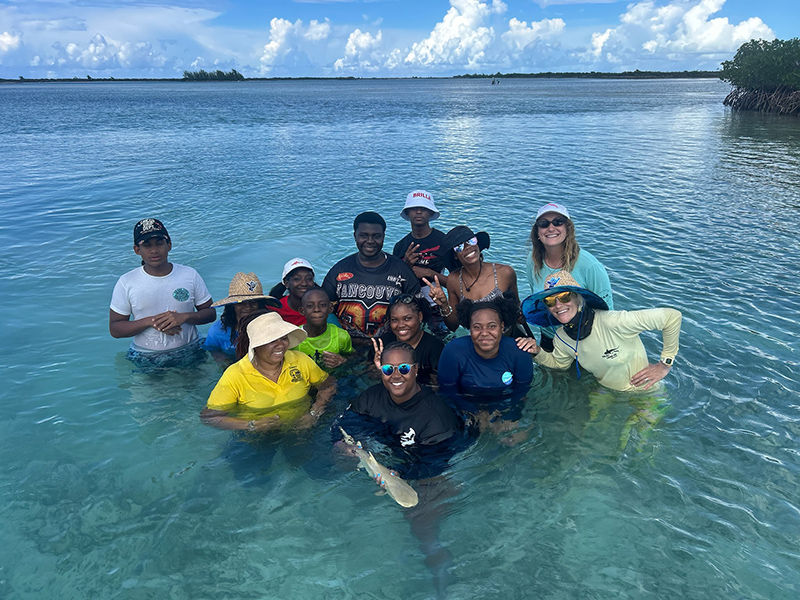March Elasmobranch of the Month: Cookiecutter Shark
- Sharks4Kids

- Mar 16, 2020
- 2 min read
Author: Linda Weiss
Cookiecutter Shark
(Isistius brasiliensis)
Key Features/Appearance
Cookiecutter sharks are a small, cylindrical shaped species, only reaching lengths of 50 cm (20 in). They are gray to brown in color with a black or dark brown band around their body, near the gills. Their two dorsal fins are located near the end of their bodies, shortly before their slightly forked caudal fin. The underside of the shark is covered with small glands (photophores) that chemically produce green light (bioluminescence). Its mouth is designed with thick lips on both the upper and lower jaws. Teeth in the upper jaw are pointed, while those in the lower jaw are triangular shaped, and nearly twice the size as the upper jaw.

Photo by J. Lambus Photography via Florida Museum

Habitat and Distribution
This shark species is known to be present near the surface and as deep as 3,500 m (11, 483 ft). It most often lives in deep mesopelagic zone, 200-1,000 m (650 – 3,280 ft). This oceanic shark is wide-ranging, inhabiting the Pacific, Atlantic, and Indian oceans. Due to the depth it inhabits, it is a difficult shark to study but appears to be more prevalent in temperate and tropical areas.

Source: Florida Museum
Diet
The Cookiecutter gets its name from the way it feeds. It uses its lips to suction itself to larger prey, then uses a twisting motion to cut away a circular “cookie cutter” piece of flesh. In addition to the large prey, such as sharks, seals, whales, dolphins, and larger fish such as billfish and tuna, Cookiecutters are also known to feed on small fish, crustaceans and squid.

Cookiecutter shark bite mark on a tuna Credit: John Soward via Florida Museum
Reproduction
Cookiecutter sharks are ovoviviparous. Embryos develop inside the female and are nourished from a yolk sac. The gestation period is ranges between 12-22 months when an estimated 6-12 live pups are birthed.
Status
The IUCN Red List of Threatened Species currently lists the Cookiecutter shark as Least Concern, with an unknown population trend. The species was last assessed in July, 2017.
Threats
Because of their size and depth of residence, Cookiecutter sharks are not targeted by commercial or sport fisheries. Their natural predators are not known, but suspected to be sharks and large bony fish.

References
Compagno, Leonard, et al. A Field Guide to the Sharks of the World. Collins, 2005.
Florida Museum of Natural History
Marinebio.org
Oceana
Shark Research Institute
The IUCN Red List of Threatened Species
Kyne, P.M. 2018. Isistius brasiliensis . The IUCN Red List of Threatened Species 2018: e.T41830A2956761. https://dx.doi.org/10.2305/IUCN.UK.2018-2.RLTS.T41830A2956761.en. Downloaded on 14 March 2020.





















